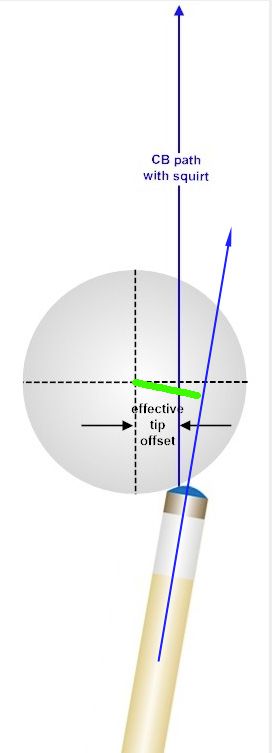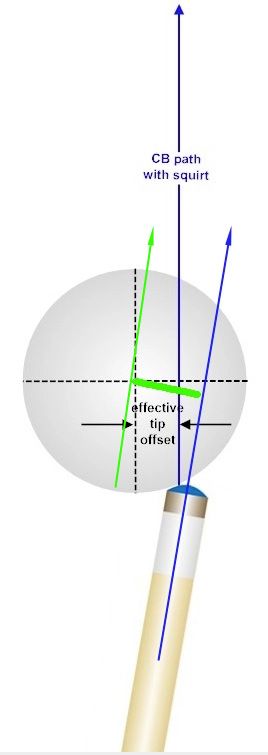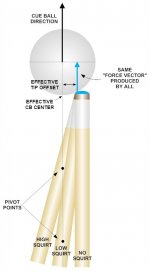Tip offset vs torque line
If a shift is parallel to the reference aim line then the tip offset on the surface of the ball is EQUAL to the torque line. The torque line is measured from the center of mass of the ball. In this case the torque line is LESS than the tip offset because the shift is not truly parallel. The tip offset is more than the torque line meaning the cueing line will eventually converge with the reference aim line. CJ described his shift as parallel but with the butt leading with the tip lagging.
Other descriptions from him talk about using only "a hair" of inside. Quite simply he shifted the cue only a minuscule amount but never wants to have the cue aimed divergently, or away from the reference line. From that point he tries to avoid any action that would spin the ball. He blunt hits through contact trying to apply a "felt sense" amount of deflection depending on shot distance, speed and position requirements. He deflects the cue ball onto a convergent path. By shading the cue line slightly laterally, deflection is guaranteed. That deflection will create a shot path that crosses the original aim line (converges).
When you realize that torque line length determines the actual amount of side, not the amount of tip offset, you also "real eyes" that you don’t need to develop a feel for how to deliver different amounts of deflection, to connect to the pocket. When simple cueing can create the convergent line without needing to develop a feel for different amounts of deflection, a consistent cue delivery can be used instead.
The acid test for that stroke is the reaction of the cue ball off contact. On all shots where the object ball is cut, the cue ball has no side spin off contact. The length of the torque line determines that reaction. The second part of the test is that the cueing line used must converge with the original reference line in addition to creating a very small torque line. With both conditions met the tip offset is always larger than the torque line.
The real secret to making this work is finding the right combination of original aim line and convergent cueing line. I plan to reveal the key to using this cueing method in the next few months. It is designed to use with any aiming system that generates a ghost ball center ball line as the original reference line.
This explanation is simply meant to provide insight into what CJ was trying to describe and why it was a "feel" system, as played by him.


